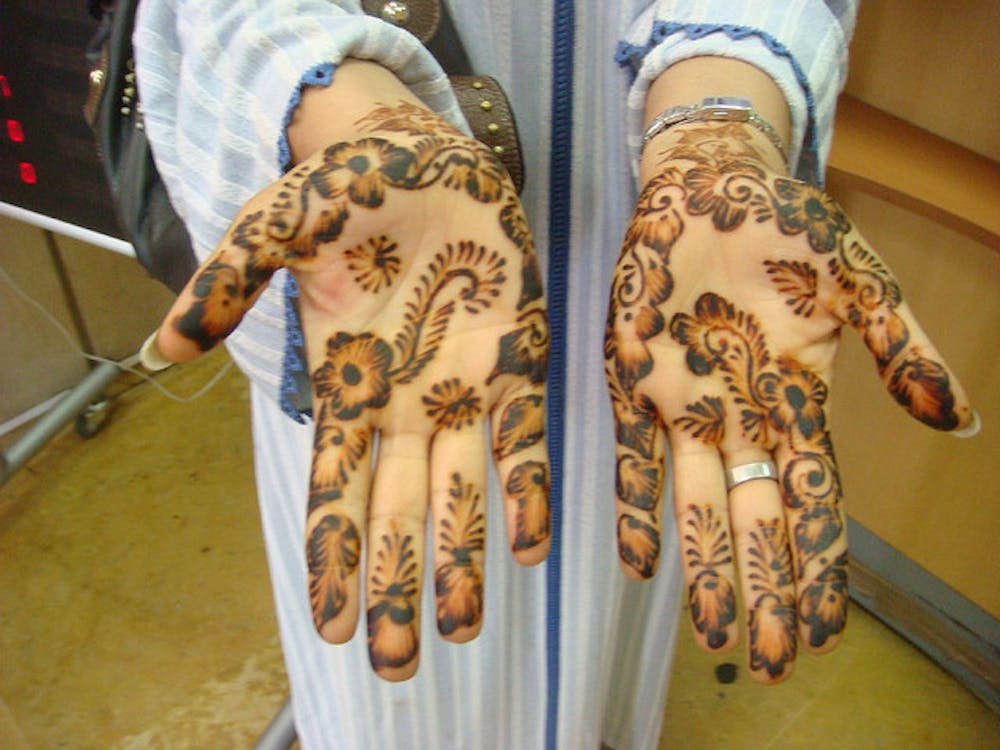The henna plant holds much cultural significance in many countries including the African country of Somalia, Yemen, India, and many other regions, too. The first usage of henna that comes to mind is the henna tattoo, an often intricate, red design which gets painted on the skin and lasts for 1-3 weeks. Nowadays, black or blue “henna” tattoos are available as well, but those are quite dangerous!
Henna tattoos can be difficult to paint, which is why they are usually reserved for festive occasions in cultures where tattooing is prominent. In Israel and India, henna designs are painted upon the bride in advance to a wedding. Other celebrations also call for henna, such as birthdays and the upcoming Hindu holiday Diwali.

Another use of henna is to dye and fortify the hair. Pure henna can be bought as a powder, but requires an acidic addition such as lemon or vinegar, and about 24 hours’ worth of soaking before the paste can be applied to the hair. “Blonde” or “natural” henna can be purchased instead, and this powder is mixed with boiling water, applied to the hair and kept warm, and finally washed off for a vivid orange shade which fades to a more natural ginger color after half a week.
The blonde henna powder, oddly enough, is not the same plant as plain old henna. In fact, the two are in different orders, which is to say they are as related to one another as a mouse and a porcupine. Yet, both plants can stain hair and skin an orange color.
I’ve experimented with henna as hair dye. Unlike many commercial boxed dyes, henna made my hair thicker, and stopped my frequent frizzy hair days right in their tracks. When I finally got tired of the redhead look and dyed my hair blonde, the henna’s orange still gave some strands of my hair a reddish tint—I hadn’t re-henna’d my hair for 9 months at that point. Henna has been used for ages to beautify the hair of women, there is little reason not to continue this trend!
As a final note, true henna and “natural” henna are two very different plants. Specifically, true henna is Lawsonia intermis, while “natural” henna is Senna italica. Both of the plants have dying properties concentrated in their leaves, which are dried, powdered, and possibly further processed. In addition to dying hair, plants in the Senna genus have a certain quality about them which makes Senna a very undesirable food choice. Dried Senna powder is used as a laxative tea for dieters, marketed as “Ballerina tea”. If you are ever required to brew yourself some of this tea, you may notice the water becoming a yellow-orange color, and they hay-like smell is very close to how S. italica powder smells right before you apply it to your hair.
Although henna has many uses, my favorite will always remain the beautiful henna tattoos.
The Art of Henna

